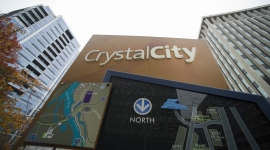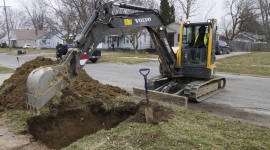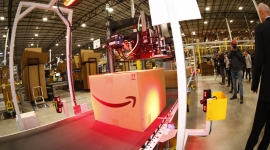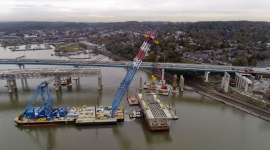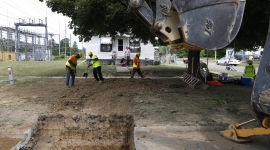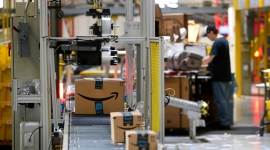State Economic Development Strategies Toolkit
Got a Minute?
Our quick and easy economic development fact sheets help break down the issues.
State governments use many different policies to spur economic development, including tax incentives, cash grants, workforce training, and development and maintenance of reliable infrastructure. But which programs successfully lure and maintain businesses and lead to better jobs, higher wages, and more tax revenue?
To help answer some of these questions, we put together a toolkit of resources and actionable solutions that state policymakers and economic development practitioners can use to better coordinate their resources, evaluate programs, and improve policies.
Below, you’ll find reports, briefs, fact sheets, and blog posts on the following topics:
Defining and Financing Economic Development
Evaluating Economic Development Policies
Workforce and Economic Development
Taxes and Economic Development
Successful economic development strategies will coordinate investments, making sure to align goals and approaches across different agencies and programs. Governments should target their resources toward gaps in support that businesses cannot fill through the private marketplace. Business assistance and tax incentives are common tools that governments use to promote devleopment, but workforce and community investments can also help create the conditions for sustainable economic growth.
The state legislature’s job is not only to propose and enact legislation for creating new economic development programs, but to monitor the state’s economic development tool kit and decide if it’s working or not and, if required, how to fix it.
William Schweke, “An Economic Development Strategy for the 21st Century: The Role of State Policy in Strengthening the Economy,” 2009.
Evaluating Economic Development Policies
Evaluating economic development initiatives is challenging because each location, economy, and program is unique, making it difficult to compare outcomes in one state to outcomes in another. To help, we’ve pulled together some resources on program evaluation.
Workforce and Economic Development
Having a skilled workforce is often a top priority for companies looking to expand or relocate. Workforce development initiatives seek to connect firms with skilled labor while giving workers the opportunity to obtain jobs with good benefits and sustaining wages. States should consider coordinating their economic development and workforce strategies.
Critical Value Podcast: Amazon and economic development
Cities are offering huge tax incentives, infrastructure improvements, and more to land the new Amazon headquarters. But are these deals good for cities? State and local finance researcher Megan Randall joins Urban’s podcast, Critical Value, to explain the opportunities, pitfalls, and trade-offs of economic development policies.
Critical Value Podcast: Opportunity Zones and Community Development
Opportunity Zones have the potential to make a huge economic impact on disinvested communities across the country. Host Justin Milner speaks with researchers Brett Theodos and Brady Meixell on how this brand-new economic development initiative works, and how we’ll know if it’s truly successful.
Critical Value Podcast: The Amazon Opportunity: Inclusive Growth and Shared Prosperity
This week’s Amazon HQ2 announcement represents a unique opportunity for the Washington region. Host Justin Milner talks with Urban Institute president Sarah Rosen Wartell and senior vice president Margery Turner about how best to take advantage of the moment and catalyze collaboration across the DC region to ensure inclusive growth that benefits all people across the income spectrum.



